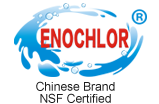Homepage / News Details
Common sterilization methods
- Categroy:News
- Author:
- Origin:
- Release Time:2022-09-28 09:36
- Views:
【Summary】In order to control the spread of harmful bacteria and viruses, it is necessary to configure sterilization security devices in the circulation process. Generally, the most commonly used disinfectants are bromine and its compounds, chlorine and its compounds.
Common sterilization methods
【Summary】In order to control the spread of harmful bacteria and viruses, it is necessary to configure sterilization security devices in the circulation process. Generally, the most commonly used disinfectants are bromine and its compounds, chlorine and its compounds.
- Categroy:News
- Author:
- Origin:
- Release Time:2022-09-28 09:36
- Views:

In order to control the spread of harmful bacteria and viruses, it is necessary to configure sterilization security devices in the circulation process. Generally, the most commonly used disinfectants are bromine and its compounds, chlorine and its compounds.
Bromine, like chlorine, kills bacteria, viruses, and algae, and has an oxidizing effect. Elemental bromine is a reddish-brown liquid at room temperature, and it is a granular methyl compound containing bromine and chlorine that is used to disinfect swimming pools. This compound is added to the circulatory system to decompose hypobromous acid and hypochlorous acid.
The cost of bromine disinfection is higher than that of chlorine disinfection, but its applicable pH range is wider. Under soft water conditions, bromine should be used as a disinfectant, and its concentration should be kept at 4-6 mg/L.
Hypochlorous acid is the main disinfectant. Its mechanism of action is: penetrating the cell wall of microorganisms, destroying the protein and enzyme systems of microorganisms; eliminating organic and inorganic pollutants in water through oxidation.
The sources of hypochlorous acid are calcium hypochlorite or chlorine gas. Calcium hypochlorite is a granular substance formed by calcium hydroxide after absorbing chlorine gas, and it is a stable compound.
When calcium hypochlorite is added to the water, it releases chlorine gas, so it can be used as a disinfectant in swimming pools. The addition of calcium hypochlorite will increase the calcium ion concentration and pH in the water, which is beneficial for swimming pools that use soft water. There should be enough chlorine added to keep the residual chlorine in the pool water at 0.4-0.6mg/L; when the organic matter concentration in the pool water is high, a mixture of NH2Cl, NHCl2 and NCl3 will appear. This is produced by the reaction of chlorine molecules with nitrogen-containing compounds in the pool water. In this way, the disinfection effect is lost, especially NCl3 will make the pool water emit an unpleasant smell. Only by further increasing the dosage of chlorine, can NCl3 be decomposed. At this time, the chlorine concentration in the water will no longer continue to rise. It will continue to rise only after NCl3 is decomposed, which is the so-called breakpoint chlorination professionally.
When the swimming pool fails to replenish enough fresh water for a continuous period of time, the content of cyanuric acid in the water is too high, and the phenomenon of chlorine lock-in will also occur, that is, chlorine mainly exists in the form of a combination of 2 or 3 chlorine molecules, thereby Disinfection is lost. It is not clear how this happens when the concentration of cyanuric acid reaches, it is generally believed that the chlorine lock-in effect is most obvious when its concentration is about 160mg/L. After the pool water is locked in chlorine, increasing the dosage of chlorine can alleviate the situation, or supplement a large amount of fresh water, but too much chlorine will cause certain harm to the human body, and frequent water replenishment will cause a lot of waste of water resources; On the other hand, cyanuric acid can act as a chlorine stabilizer, and it is advantageous to keep it in a low concentration in water to avoid ultraviolet rays from sunlight consuming the residual chlorine in the water. Usually added to the water in the form of particulate matter, it can also be produced during the dissolution of the dichloride complex or the trichloride complex into the water: the chlorine complex is split into individual chlorine molecules, and cyanuric acid is produced at the same time. Therefore, if a chlorine complex is added to the pool, no additional chlorine stabilizer is required. However, when using sodium hypochlorite or calcium hypochlorite as a disinfectant, it is necessary to add a chlorine stabilizer. Care should be taken to avoid mixing the above substances in a dry state, which will be dangerous; in special cases, excess sodium hypochlorite or calcium hypochlorite can be added to the pool water at one time to form a higher chlorine concentration and inhibit algae. It grows and reduces the unpleasant chloroform odor, and also destroys organic contaminants that collect together. In addition, the excessive chlorine gas is injected at one time to make the chlorine concentration in the pool water reach about 10mg/L, which can effectively prevent the reproduction of bacteria and algae. , Teeth will cause discomfort, and its disinfection by-product chloroform may cause serious damage to human kidneys and liver.
Releate News

Time of issue : 2024-04-15 16:52:27

Time of issue : 2024-04-09 10:13:04

Time of issue : 2024-04-01 17:10:12
CONTACT US
PRODUCTS
CALCIUM HYPOCHLORITE
TCCA
SDIC
BCDMH
FEEDBACK
© 1999-2018 北京网站建设有限公司 Copyright © 2012-2022 All Rights Reserved Powered by www.300.cn 冀ICP备12012949号 津公网安备 12010302002173号 Seo tag

